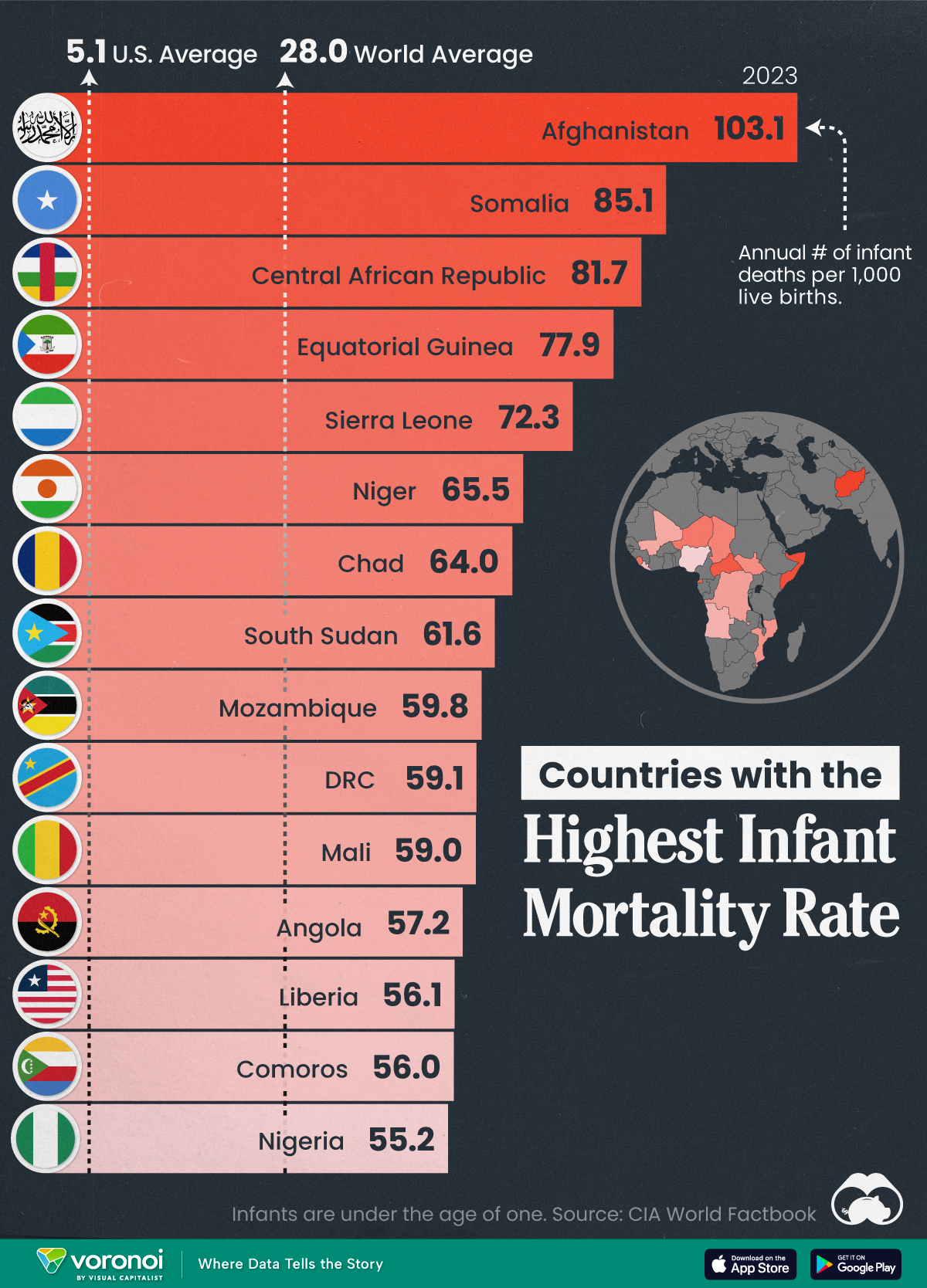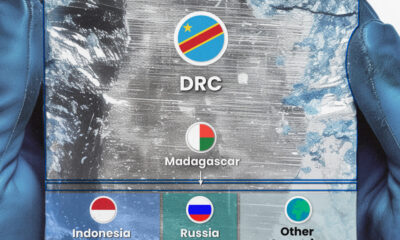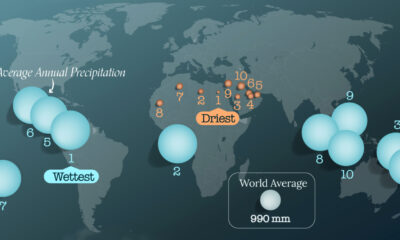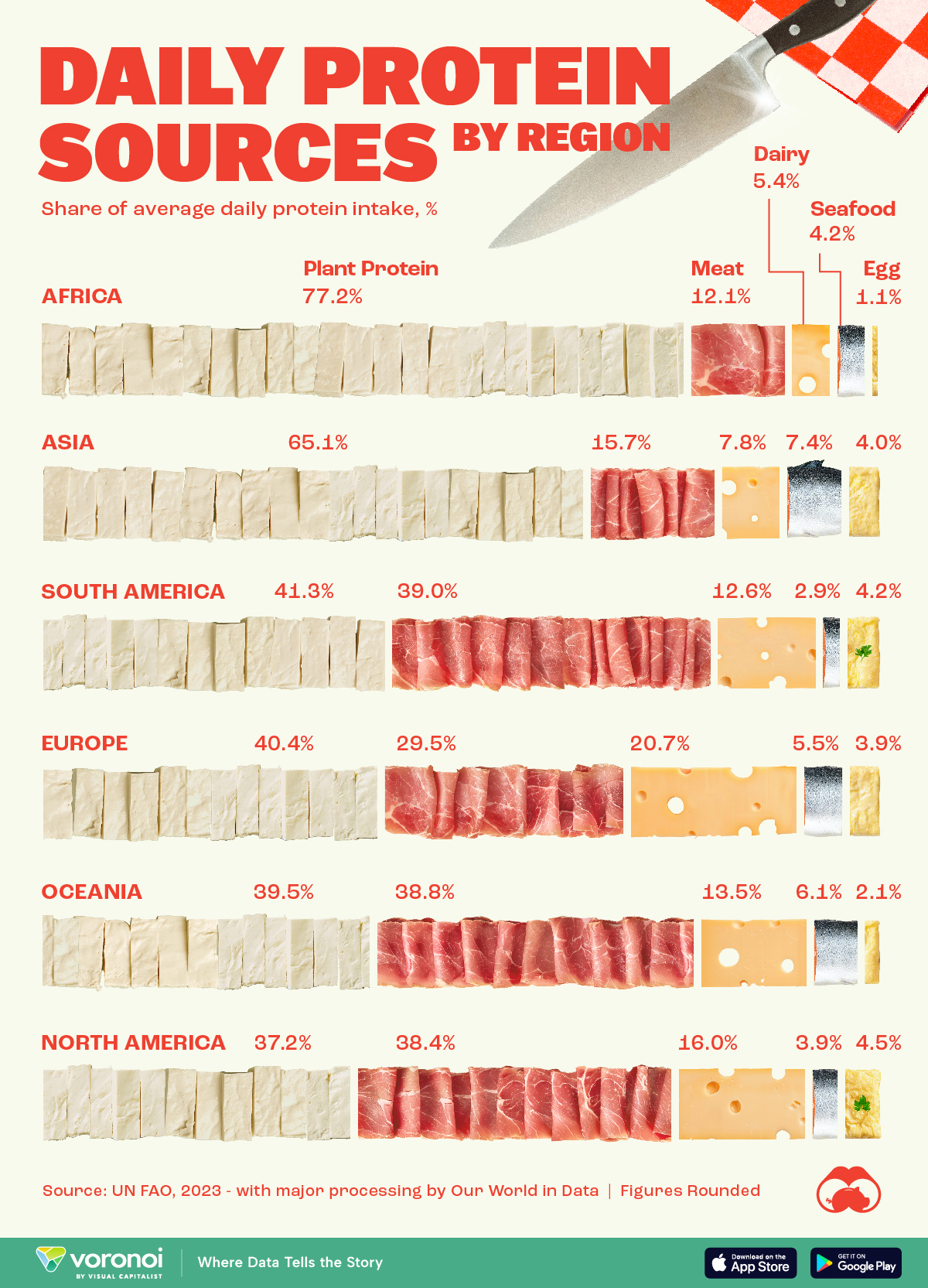Healthcare
Which Countries Have the Highest Infant Mortality Rates?
![]() See this visualization first on the Voronoi app.
See this visualization first on the Voronoi app.
Which Countries Have the Highest Infant Mortality Rates?
This was originally posted on our Voronoi app. Download the app for free on iOS or Android and discover incredible data-driven charts from a variety of trusted sources.
We visualized the top 15 countries with the highest infant mortality rates, according to 2023 estimates from the CIA World Factbook. It is measured as the number of infant deaths under the age of one, per 1,000 live births in a given year.
Infant mortality rates are generally regarded as the barometer of an overall population’s health. A higher rate indicates unmet needs of a population, especially with regards to food availability and sanitation.
Ranked: Countries With the Highest Infant Mortality Rates
Afghanistan currently has the highest infant mortality rate in the world at 103 deaths per 1,000 babies born. Decades of conflict have pushed the country to the brink and a prolonged drought since 2021 has made food more scarce.
| Rank | Country | Region | Infant Mortality Rate (2023) |
|---|---|---|---|
| 1 | 🇦🇫 Afghanistan | Asia | 103.1 |
| 2 | 🇸🇴 Somalia | Africa | 85.1 |
| 3 | 🇨🇫 Central African Republic | Africa | 81.7 |
| 4 | 🇬🇶 Equatorial Guinea | Africa | 77.9 |
| 5 | 🇸🇱 Sierra Leone | Africa | 72.3 |
| 6 | 🇳🇪 Niger | Africa | 65.5 |
| 7 | 🇹🇩 Chad | Africa | 64.0 |
| 8 | 🇸🇸 South Sudan | Africa | 61.6 |
| 9 | 🇲🇿 Mozambique | Africa | 59.8 |
| 10 | 🇨🇩 DRC | Africa | 59.1 |
| 11 | 🇲🇱 Mali | Africa | 59.0 |
| 12 | 🇦🇴 Angola | Africa | 57.2 |
| 13 | 🇱🇷 Liberia | Africa | 56.1 |
| 14 | 🇰🇲 Comoros | Africa | 56.0 |
| 15 | 🇳🇬 Nigeria | Africa | 55.2 |
| N/A | 🌐 World | World | 28.0 |
Meanwhile, the other 14 countries on this list are all from Sub-Saharan Africa. Some of them are also experiencing civil unrest, a breakdown of state machinery, and high undernourishment rates.
While this is concerning, Africa’s infant mortality rate as a whole has improved tremendously in the last seven decades. Between 1950–2024, the continent’s average fell 73% to 41 deaths per 1,000 births.
Expansion of healthcare, improving nutrition, access to clean drinking water, and mass immunization programs are some of the reasons behind this massive decline.
Estimates assume Africa’s infant mortality rate will improve further to 25 per 1,000 live births by 2050—which is roughly the same as Asia today.
Healthcare
Visualizing Daily Protein Sources by Region
Here, we break down how people around the world get their protein intake.
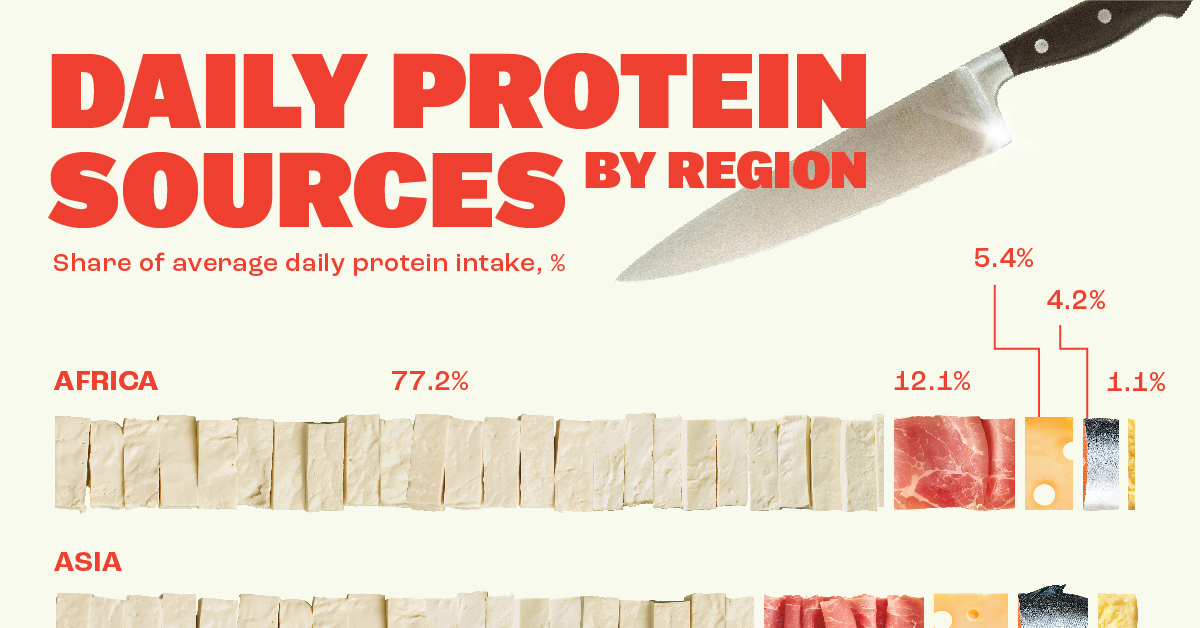
Visualizing Daily Protein Sources by Region
This was originally posted on our Voronoi app. Download the app for free on iOS or Android and discover incredible data-driven charts from a variety of trusted sources.
Protein plays a vital role in creating and maintaining every cell in our bodies.
This graphic breaks down how people in different regions of the world get their protein intake. The figures come from the UN Food and Agriculture Organization (UN FAO), accessed via Our World in Data.
The figures we present here reflect the distribution of daily protein intake across regions, with each region’s total adding up to 100%. It’s important to note that this is distinct from the actual amount of protein consumed per person, often measured in grams.
Developed Countries Have More Access to Meat and Dairy
Protein has many benefits for our bodies. It is a building block of bones, muscles, cartilage, and skin. Our hair and nails are comprised mostly of protein. It is also used to repair tissue, oxygenate the body, and make enzymes, which aid in digesting food.
People in more developed regions (like North America or Europe) get a larger share of their daily protein from meat and dairy.
| Region | Plant protein (%) | Meat (%) | Dairy (%) | Seafood (%) | Eggs (%) |
|---|---|---|---|---|---|
| Africa | 77.2 | 12.1 | 5.4 | 4.2 | 1.1 |
| Asia | 65.1 | 15.7 | 7.8 | 7.4 | 4.0 |
| South America | 41.3 | 39.0 | 12.6 | 2.9 | 4.2 |
| Europe | 40.4 | 29.5 | 20.7 | 5.5 | 3.9 |
| Oceania | 39.5 | 38.8 | 13.5 | 6.1 | 2.1 |
| North America | 37.2 | 38.4 | 16.0 | 3.9 | 4.5 |
When only considering meat, South America, with big producers like Brazil and Argentina, takes the lead as the most important protein source.
Meanwhile, Asia, with top fish producers China and India, leads in protein intake from seafood.
In Africa, where many developing countries in the world are located, plant protein is the most important protein source for the population.
-
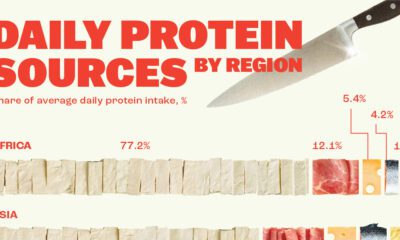
 Healthcare1 week ago
Healthcare1 week agoVisualizing Daily Protein Sources by Region
-
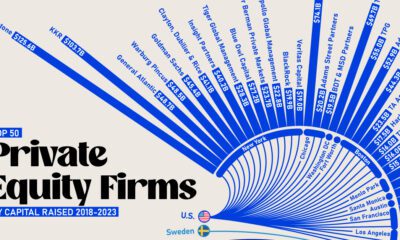
 Finance2 weeks ago
Finance2 weeks agoRanked: The World’s 50 Largest Private Equity Firms
-

 Markets2 weeks ago
Markets2 weeks agoMapped: The 10 U.S. States With the Lowest Real GDP Growth
-

 Economy2 weeks ago
Economy2 weeks agoComparing New and Current U.S. Tariffs on Chinese Imports
-

 China2 weeks ago
China2 weeks agoWhich Countries Have the Most Economic Influence in Southeast Asia?
-

 United States2 weeks ago
United States2 weeks agoThe Top 25 Nationalities of U.S. Immigrants
-

 Countries2 weeks ago
Countries2 weeks agoRanked: Countries Where Youth are the Most Unhappy, Relative to Older Generations
-

 Technology2 weeks ago
Technology2 weeks agoVisualizing the 5 Most Common Cybersecurity Mistakes

